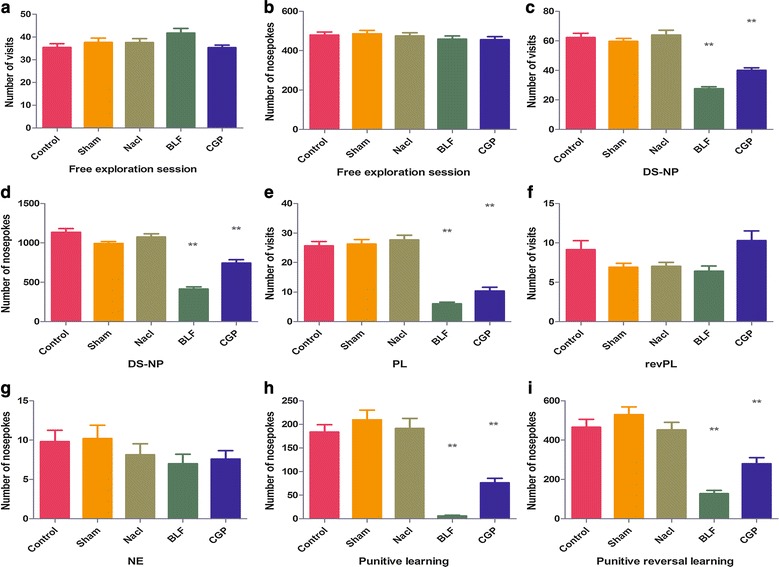Fig. 2.

Behavioural test (a). b Free exploratory: there was no significant difference in visit and nosepoke between the five groups of rats, indicating that the model preparation had no effect on the basic learning ability of rats. c Number of visits in nosepoke learning: In the BLF and CGP groups, the number of visits decreased (P < 0.01, compared with the other three groups), and the BLF group decreased significantly (P < 0.01, compared with the CGP group). d Number of nosepokes in nosepoke learning: The BLF and CGP groups showed decreased numbers of nosepokes (P < 0.01, compared with the other three groups). The decreasing trend in the BLF group was more obvious (P < 0.01, compared with the CGP group). e Number of correct visits in position learning: the number of correct visits decreased in the BLF and CGP groups (P < 0.01, compared with the other three groups). f Number of correct visits in position reversal learning: There was no statistically significant reduction in the number of correct visits in the BLF and CPG groups compared with the other three groups (P < 0.01). g Number of visits in novelty exploration: The results showed no significant difference in the visiting times of five groups of rats. h Number of correct nosepokes in punitive learning: The BLF and CGP groups exhibited fewer correct nosepokes (P < 0.05, compared with the other three control groups), and the number in the BLF group was significantly lower (P < 0.05, compared with the CGP group). i Number of correct nosepokes in punitive reversal learning: The correct number of nosepokes in the BLF and CGP groups was reduced (P < 0.01, compared with the other three groups), and the BLF group had the least number of correct nosepokes (P < 0.05, compared with the CGP group)
